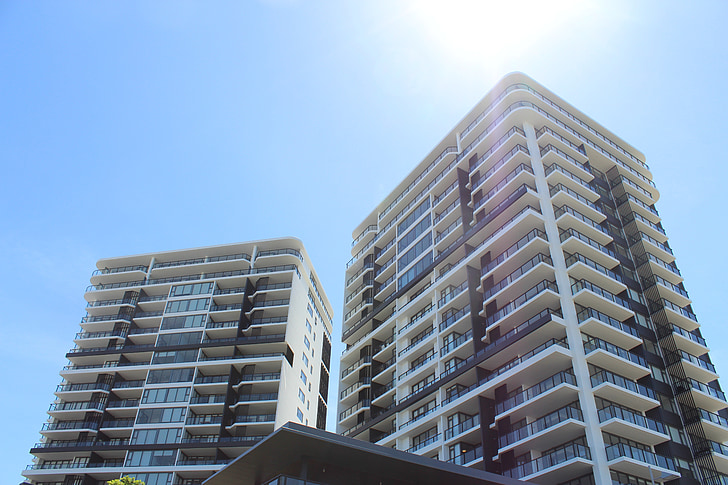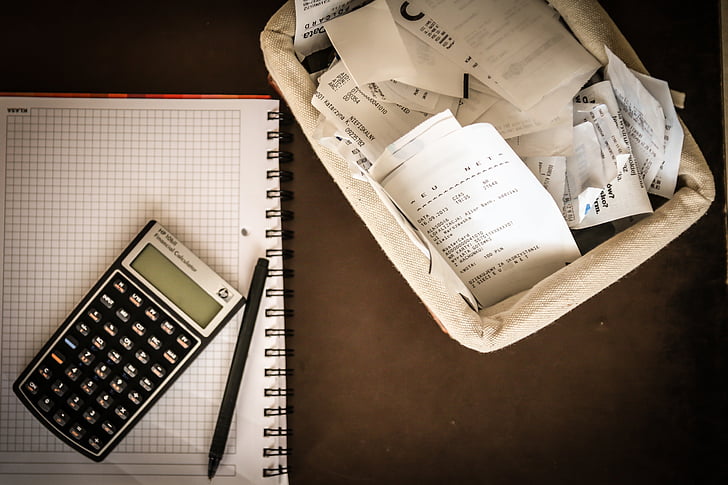How to apply for a rental property in Australia is the most important matter among international students and backpackers. As an international student or backpacker, understanding process of how to apply for a rental property in Australia and the concept of a lease is essential before embarking on your housing search. In this blog, we will provide a comprehensive guide on applying for a rental property in Australia, specifically tailored to international students and backpackers.
We will explore the meaning of a lease, discuss the requirements for renting, offer valuable tips for a successful rental experience and etc.
How to Apply for a Rental Property in Australia

If you are applying for a rental property from student apartments, you need to follow these steps.
- Step 1: On the application page, students need to provide basic information, such as name, mobile phone number and email address.
- Step 2: If the apartment accepts the application, students will receive an Offer Letter in the mail. You need to provide your passport, school CoE, valid visa, and pay 2 weeks’ rent within the specified time to reserve the room.
- Step 3: After student apartment confirms the materials, it will send an email to the students indicating that they have successfully rented the apartment. After landing in Australia, students only need to bring their passport and school CoE to the reception desk to check in, and pay 4 weeks’ rent as a bond. If you rent through an agency, you will also need some personal information and supporting documents.
If you are applying for a rental property from local market, you need to follow these steps.
- Step 1: Students need to determine where you can apply for a rental property. Here are some channels to apply for a rental property in Australia.
- Step 2: Students determine the details of the house they want to apply for based on your own personal circumstances.
- Step 3: Students need to prepare a personal Renter Profile.
- Personal Details: Such as name, phone number and email address.
- About Me: This column is the Cover Letter. Students introduce your situation to the landlord. The most important thing is to show the landlord that you are a reliable tenant.
- Address History: Students fill in the residence history of the past two years in this column.
- Employment: If you have a job, you can fill in your job details here. But we international students can honestly choose not to.
- Income: Students can upload a screenshot of your parents transferring living expenses to you.
- Identify document: This column is for uploading some documents with your ID, such as passport, driver’s license, and insurance card.
- Emergency contact: Students fill in an emergency contact person who is a family member or friend you think is reliable.
- Step 4: After students find the houses you like, you can contact the Owner/Agent to make an Inspection appointment. Most agents will choose to view houses together.
- Step 5: After students are satisfied with the apartment, you can submit a rental application on the rental website. If you rent through an agency, apply by email or other methods as required.
- Step 6: After students exchange some rental details with the landlord/agency, they can sign a rental contract and pay the rent and deposit, which is the 4 week’s bond plus 2 week’s rental we mentioned earlier.
- Step 7: Students are required to complete a move-in inspection, which is the final step for a smooth start.
Attention:
- Make sure all electrical appliances and lighting fixtures are functioning properly as soon as possible
- Determine the quantity of furniture in the house and whether it is damaged
- Whether doors and windowscan be closed securely
- Whether there are obvious damages or stains on the walls, floors, and facades
- Pay attention to damage and stains on carpets and wallpapers(replacement is very expensive)
Condition of Rental Market

According to data from CoreLogic, as of April 10, 2024, house prices have increased by 9.4% compared with last year. As more and more international students come to Australia to study, the current housing vacancy rate is very low, and it is still difficult to apply for a suitable rental property.
Houses are divided into 3 types according to different ownership:
Chinese Landlord
- Trend: Chinese landlords generally follow the trend of studying abroad, which is the cycle of the start of school. The firstsemester starts in February and ends in June; the second semester starts in July and ends in November. Therefore, the months of January, February, June, July, and December are the peak seasons for house replacement.
- Preference: Basically, one household enters and the other leaves. Chinese landlords prefer tenants to rent for one year, and rarely for half a year.
Local Landlord
The local market has the largest reserve of houses, and a large number of houses can be found on local websites. Australia has a large number of local websites and apps for all tenants. The rental system is relatively mature and the entire system is complete, involving the lease period, house viewing, packaging and later rights protection.
- Scale: The local market has the largest reserve of houses, and a large number of houses can be found on local websites.
- Trend: Local houses do not follow the trend of studying abroad, but follow the migration of the local population.
- Preference: There will be a huge labor boom after Christmas in Australia, so there will be relatively more housing in January. But if it is the international student market, according to the graduation season and the enrollment season, June is the small graduation season and December is the big graduation season, and the housing stock will be vacant in these two months.
- Bill: Home in the local market are relatively transparent, including house viewing, contract signing, maintenance, and responsibilities to be performed after signing the contract. Therefore, most of the local houses are unfurnished and do not include bills.
- Transportation: The house may not be next to a bus stop or a supermarket.
Students Apartments
Trend: The student apartments also follow the trend of studying abroad. However, because completion and opening times of each apartment are different, there will be linked price reductions or package sales before the opening of each apartments.
Price Reduction: Special prices do not necessarily appear before the start of semester, but appear before the last best-selling lease.
Providers: Australian student apartment chain brands include Scape, Y Suites, Iglu, and Unilodge, and each school also has its own on-campus student apartments. uhomes.com is a well-known and reliable housing agency platform that has in-depth cooperation with these student apartment providers.
Facility: School apartments rooms are similar and have public spaces and facilities, but apartments in different areas have different room types and layout arrangements.
Bill: All school apartments have bills of water ,electricity and network included.
Universities Providing On-compus School Apartments in Australia:

- The University of Sydney
Queen Mary Building
Abercrombie Student Accommodation
The Regiment Student Accommodation
Darlington House
- The University of New South Wales
UNSW Village
UNSW College
University Terraces
- The University of Melbourne
- The University of Queensland
- Australian National University
- Macquarie University
Requirements for How to Apply for a Rental Property in Australia

Applying for a rental property in Australia as an international student or backpacker may have specific requirements that differ from local residents. Here are some common requirements to consider.
- Valid visa: Ensure you have a valid student visa or working holiday visa that allows you to reside in Australia and rent a property.
- Proof of enrolment or employment: Provide documentation proving your enrolment in an educational institution or employment status, demonstrating your ability to pay rent.
- Rental application: Complete a rental application form, including personal details, references, and financial information.
- Rental history or guarantor: International students with limited rental history may need to provide a guarantor, such as a family member or guardian, who can vouch for your credibility as a tenant.
- Bond: Landlords usually require a security deposit, known as a bond, which is refundable at the end of the tenancy, provided no damages occur.
What is Average Rent in Australia?
Here is a table about average rent in several cities in Australia per month. The rent of local houses is higher than student apartments. The rent of local houses is $3,000 – $5,200 per month while that of school apartments is $2,000 – $2,800 per month.
| City | Property Type | Average Rent (AUD per month) | Estimated Utility Bills (AUD per month) |
|---|---|---|---|
| Sydney | School Apartment | $2,000 – $2,800 | $200 – $320 |
| Local House | $3,000 – $5,200 | $320 – $480 | |
| Melbourne | School Apartment | $1,950 – $2,600 | $173 – $300 |
| Local House | $2,600 – $4,333 | $300 – $433 | |
| Brisbane | School Apartment | $1,733 – $2,367 | $150 – $260 |
| Local House | $1,950 – $2,867 | $217 – $347 | |
| Perth | School Apartment | $1,517 – $2,167 | $130 – $217 |
| Local House | $1,733 – $2,600 | $173 – $300 | |
| Adelaide | School Apartment | $1,300 – $1,950 | $108 – $173 |
| Local House | $1,517 – $2,367 | $150 – $260 | |
| Canberra | School Apartment | $1,733 – $2,367 | $173 – $260 |
| Local House | $2,167 – $3,500 | $217 – $347 |
What is Rental Period?

The length of a lease in Australia varies, but the most common duration is 6 or 12 months. However, shorter or longer leases can be negotiated depending on the landlord’s discretion and your specific circumstances. It is important to review the lease agreement carefully to understand the duration of your tenancy and any provisions related to lease renewal or termination. Generally, those with a lease term of half a year or more are long-term leases, and those with a lease term of less than half a year are short-term leases.
What is Deposit?
The deposit is usually 4 weeks’ bond plus 2 weeks’ rent. The bond is a security deposit that is collected upon signing of the lease and lodged with the official bond authority of your state. It protects the landlord during the lease in the instance of property damage or breach of the lease agreement. In Australia, the law stipulates that the maximum bond amount for a general lease is four weeks’ rent. If it is higher than four weeks, you need to be vigilant.
Attention:
If you rent through unofficial channels and there is no guarantee, you need to transfer 6 weeks of money (4 weeks’ bond + 2 weeks’ rent) abroad through international transfer.
What is Bill?

Bill refers to the expenses incurred for essential services used by tenants within the property. Generally, apartments include water bills. Whether the bill is included means whether the cost of the electric is included. Students need to find out with the landlord/agent whether it is included in the rent or whether they need to pay out of pocket.
Details of How to Apply for a Rental Property in Australia
But these simple steps come with a lot of details that need attention.
- Security > Convenience > Budget
Students must put security first, followed by the convenience of surrounding shopping and transportation ensuring your lives. If your budget does not allow it, you can choose short-term rental first, and then switch when you are familiar with the surrounding living environment and determine which area you prefer.
- If you choose to share a room with others, you will be more comfortable getting along with a roommate whose background, habits, and ideas are similar to yours.
- Many freshmen cannot confirm the landlord’s personal information.
- Some houses are rented as a whole by second-hand landlords and then sub-let. There are also some second-hand landlords who set prices very high to make money by taking advantage of the information gap.
- The price of short-term rental is much higher than that of long-term rental, and the overall rental is cheaper than renting a single room. In addition, students must calculate the time of vacation and the point of subletting.
- Students apply for a rental property must go through RBO (Rental Bond Online).
- Everything in Australia, including rent, lease term, and bills of water, electricity, and network can be counter-priced.
Comparison among Rental property
| House/Townhouse/Unit | Apartments/Serviced Apartments | Students Apartments | |
|---|---|---|---|
| Location | 1. More convenient to the bus station 2. Supermarket is not very convenient. |
1. Near the downtown area and the main street 2. not be beside the supermarket |
Overcrowding during the rush hour |
| convenience | Large space | Medium space | Small space |
| Security | Depends on whether it is old or new | Double or triple access control (entry, elevator, entry) | Triple access control |
| Cost-effectiveness | High | Medium | Low |
| Rental Period | Generally one year | 6 months /1 year | Available from 15 to 44 weeks, the longer the lease the cheaper |
Conclusion
This blog provides a comprehensive and detailed explanation of the steps, precautions and various details of applying for a rental property in Australia. Through this blog, you can apply for a rental property of your choice, avoid falling into traps, and start a new life in Australia.
FAQ
It is not uncommon for prospective renters to offer above the asking rental price in the hopes of securing a coveted property. This practice is commonly referred to as rental bidding. A 2016 Consumer Affairs Victoria report estimated that one in five Victorian tenants offer to pay more than the advertised rent. Rental bidding is illegal in New South Wales, Queensland, Victoria and Tasmania. It is not currently illegal in other states, but agents and landlords cannot deceive or mislead prospective tenants by advertising a rent amount they are not willing to accept, or tell applicants a higher offer has been made if this is not true. Those considering offering more than the advertised rent should first consider their financial position. As a rule of thumb, affordable rent is considered to be no more than 30 per cent of household income. If rental bidding sees a tenant paying more than 30 per cent of their household income to rent a property, they will likely be in rental stress.
It is common for renters to be rejected for a handful of properties before eventually being successful, especially in a competitive marketplace. If you have been rejected and would like to know why, you can ask the responsible property manager for feedback. These are the most common reasons why an applicant’s rental property applications are repeatedly rejected: You haven’t provided enough evidence of your income; You haven’t completed the application properly; You’re applying for properties outside your price range; You didn’t apply quickly enough.
Once you’ve been accepted for a rental property, you’ll need to sign a lease, also known as a residential tenancy agreement. This is a legally binding agreement between a tenant and landlord that stipulates key information such as: how long a tenant can live in a property, the rent amount, and how and when it is paid the bond amount, any special conditions (such as whether or not you can have pets or whether you are able to light a fire in the fireplace). A lease can be written or verbal, but written is recommended. It also needs to comply with the relevant state legislation.
The landlord is responsible for the initial installation of electricity, gas, and water services to the premises. Tenants will need to set up their utilities when they move in. The tenant is then usually responsible for paying for the utility bills while renting the property.
The exception to this is when the property does not have a separate meter to monitor usage. This is common in apartment buildings for example, where the building will only have one meter measuring the entire building’s water usage instead of individual meters for each apartment. In these instances, the landlord is responsible for the bill as the meter is recording the usage of other people who aren’t part of the tenancy agreement.
If a tenant wishes to have a landline telephone and internet connected, the ongoing costs and fees will be at the tenant’s expense. If no line has been previously installed for these services, the cost of this can be negotiated between the landlord and the tenant. In most areas, television is not considered an essential service for rental properties. Tenants may ask the landlord to install a television line outlet, but the landlord does not have to agree.
Where bottled gas is provided, the landlord usually pays for the supply or hire of bottles, and the tenant pays for the gas. The landlord is also typically responsible for all rates, taxes, or charges levied by government.
How and when repairs are to be completed in a rental property are complicated issues, and the laws differ depending on the state or territory. Repairs can generally be classified as urgent and non-urgent. Urgent repairs refer to a breakdown of essential services within a rental property. In most areas, the landlord is usually obliged to fix urgent repairs within 24-48 hours (the time-frame differs between states and territories), even on weekends. Non-urgent repairs refer to a breakdown of non-essential services that were once working or were reasonably assumed to work upon moving into a rental property. It’s important to note that landlords are only obliged to undertake repairs, not updates. Non-urgent repairs, therefore, do not include changes a tenant simply desires, such as requesting new carpet or fresh paint, unless this was negotiated by the tenant before moving in.
Inform the landlord or property manager them of any non-urgent repairs in writing, or by using an official form if your state has one. The landlord or property manager then has a specific time-frame depending on the relevant legislation to either complete the repairs or formally respond with an objection.
Tenants cannot withhold rent while waiting for repairs. If a landlord does not meet his or her obligations, you may be able to terminate the lease without penalty, depending on your state.
If a tenant is personally responsible for any damage to a property beyond reasonable wear and tear, they may be required to undertake repairs at their own expense. This includes accidental damage, such as a broken window or red wine spilled on the carpet, and malicious damage.
Alternatively, if the tenant has renter’s insurance that includes coverage for accidental damage, they can make a claim to their provider.
If the issue of any damage is not resolved between the landlord and tenant, the landlord may escalate this to a tribunal.
At the end of a tenancy, a landlord may try to claim some or all of a tenant’s bond as compensation for any outstanding damage to the property.
The time-frame within which landlords must complete repairs depends on the state or territory, and whether the repair is urgent or non-urgent. The legislation is more specific in some states than others.
For urgent repairs, most states require property managers to respond immediately and attend to the problem within 24 hours. However, in the Northern Territory, the landlord has five business days after being notified to either make repairs to the property or arrange for repairs to be made within 14 days. If emergency repairs are required, and the agent is uncontactable, there are guidelines governing when tenants can arrange their own repairs.
In the case of urgent repairs only, most states and territories allow tenants to independently hire a tradesperson to undertake repairs if the tenant has not been able to make contact with the agent landlord and no emergency contact has been provided.
In Victoria, for example, renters are pre-approved to request urgent repairs worth up to $1800. In NSW, the maximum is $1000, and in the ACT it’s equivalent to 5 per cent of the annual rent. Check your relevant legislation for the pre-approved urgent repair amount.
Before hiring a tradesperson, be sure to double check that the issue is officially classified as an urgent repair. For example, a broken airconditioner is not an urgent repair. If the repair is not urgent, the landlord is under no obligation to reimburse the tenant for works undertaken. Make sure all works are carried out by a licensed tradesperson and collect receipts.
If the urgent repairs are likely to cost more than the pre-approved urgent repair amount or the tenant cannot afford to pay for them, they can usually apply to their relevant state or territory’s tribunal for an urgent hearing order.
Each state and territory has a process tenants should follow when it comes to being reimbursed for urgent repairs, which usually occurs within 14 days. It’s important to use official forms to communicate with landlords and agents where possible as they are obliged to respond.
If a tenant personally damages a rental property and carries out repairs themselves, they run the risk of potentially making the issue worse. It is advisable tenants contact their property manager or landlord and follow the official channels to rectify any damage made to a property.
Tenants are likely entitled to a rent reduction if the property they are leasing has unexpectedly or substantially decreased in quality. Reasons for this might include the commencement of nearby construction that the tenant was not aware of before moving in, broken appliances not repaired promptly, or a significant drop in the market rate.
Tenants can issue a request for a rent reduction in writing. The landlord can refuse this request or negotiate an alternative with the tenant. If an agreement cannot be reached, this may escalate to a tribunal level.
The part of the property a tenant is responsible for is usually outlined in their tenancy agreement. These responsibilities shouldn’t put the tenant in danger, require expertise in maintenance, or require specialist equipment.
Responsibilities the tenant usually has outside the home typically include mowing lawns, weeding and pruning. Cleaning gutters is a task that could put the tenant in danger and is therefore usually not included.
Inside the home, the tenant is responsible for maintaining the property to a reasonable standard, notifying the agent or landlord of issues, and undertaking tasks such as changing standard light bulbs, unless these are specialist fittings requiring expertise.
The tenant is usually responsible for connecting and paying for all utilities such as gas, electricity and water, provided there is a separate meter for each service.
A tenant who does not pay rent by the due date is considered to be in “rent arrears”. The consequences for this in Australia are dependent on the state or territory.
In Victoria, for example, if a tenant is not paying all or part of the rent as agreed in the lease, and this cannot be resolved through informal discussion, the landlord can apply to VCAT for an amount of compensation including any unpaid rent. If VCAT makes a compensation order and the tenant does not comply with it, the landlord can ask them to leave the property within 14 days.
In NSW, if the tenant falls more than 14 days behind with the rent, a landlord can serve them with a written termination notice giving them 14 days to vacate the property.
Refer to your state’s legislation for the rights of tenants and landlords with regards to non-payment or late payment of rent.
Tenants must allow landlords, real estate agents and tradespeople to enter a rental property and carry out certain inspections and repairs, but there are rules regarding when and how this can occur.
In most cases, the landlord can enter even if the resident is not at home, provided that an agreement has been reached or adequate written notice has been given.
The frequency at which landlords can raise a tenant’s rent and the notice required depends on the state or territory.
Tenants are typically given a set amount of time to negotiate a rent increase or escalate this to a tribunal level for third-party assessment.
There are numerous ways to decorate a rental property that don’t require a landlord’s permission. They include styling with indoor plants, lamps, rugs, bedding, soft furnishings, storage baskets, photographs, artwork, ceramics, books and candles.
Vintage bazaars, online furniture marketplaces, op-shops, eBay and Gumtree, are all great places to find quality secondhand furniture pieces at affordable prices.
The legislation around changing the locks on a rental property differs state to state.
Generally speaking, if a tenant does lock themselves out of their rental property, they should first contact their property manager to see if they have a spare key.
If the agency does not hold a spare key, or the tenant has locked themselves out after business hours, the tenant will need to contact a locksmith to gain entry at their own expense.
If a tenant changes the locks at any time during a tenancy, they must supply their property manager or landlord with a new set of keys. They are also usually required to get the landlord’s consent to change locks, which cannot be unreasonably withheld. Some states also have rules requiring landlords to get permission from tenants before changing the locks on a rental property.
There are other provisions in place to allow victims of family violence to change the locks in a rental property.
Generally speaking, tenants should leave a rental property in the same condition as when they moved in. It’s therefore very important to document the state of the home on a condition report upon moving into a property to avoid potential disputes down the track.
In most states, legislation stipulates a rental property should be returned to a “reasonably clean”condition upon vacating.
Most tenancy agreements or agents will provide tenants with a list advising them of often overlooked elements to clean such as fans, vents, filters, blinds, ovens and behind appliances.
Tenants are under no obligation to hire professional cleaners in order to receive their bond back.
Many tenants are under the impression that they must have carpets steam cleaned in order to receive their bond back, but this is not always enforceable or legal. In NSW for example, a residential tenancy agreement must not contain such a term, unless the landlord permits the tenant to keep an animal on the residential premises.
In other states, the rules around steam cleaning carpets are less clear and this is often included as a special clause on a tenancy agreement.
Some consumer affairs agencies and tenants’ unions say carpets only need to be steam cleaned if the landlord had steam cleaned the carpets prior to tenants moving in, as the tenant should only be responsible for returning the property to its previous state. Unions have successfully argued cases of this type at a tribunal level.
If you do decide to steam clean the carpets in a rental property, always keep the receipt as evidence.







